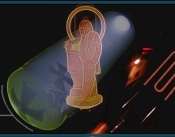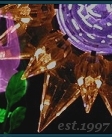Light bulbs are made in many shapes, but basic physics places certain limits on what shapes can be chosen.
Most early lamp types contain a vacuum, therefore the air imposes considerable stress on the glass bulb, which must be a suitable shape so as not to shatter.
A sphere would be the strongest, but has the disadvantage that the cap is very close to the filament, which except in very low power lamps, would result in the cap and lampholder becoming too hot.
Later lamp types are often gas filled, but similar constraints apply, since when cold the lamp will be below atmospheric pressure, and when hot above.
Very small lamps can be made in almost any shape, look at shaped Christmas bulbs for example, but larger ones can only be readily made in sphereical, pear shaped or tubular styles.
Odd shaped lamps can be made but tend to be expensive, or less efficient, or liable to shatter.











